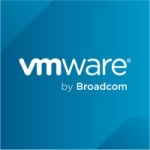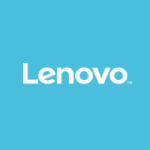What is our primary use case?
We are a solution provider and Cisco HyperFlex is one of the products that we propose to our customers. This product is used for hyper-convergence in IT transformation and can be used for very heavy workloads such as VDIs or HAP HANA.
What is most valuable?
The most valuable feature is that you can manage the whole cluster from the fabric interconnect.
The physical switches are more reliable than the virtual machines.
using a virtual machine to manage the cluster, needs lots of pre-configuration & validation steps, as well may lead to cluster fail in case of the fail / corruption of the VM (unless you manage to have a valid backup to restore, with a valid cluster restoration plan),
despite the managing of the Cisco Hyperflex, it comes almost preloaded & stand ready for deploying, as well in redundant architecture, which reflect a solid base for managing & reliability deployment.
What needs improvement?
They need to make many improvements to this solution but the most important area is the compression. Most customers are concerned with the compression for a specific workload, and then maintaining it. The performance and compression vary depending on the type of workload; for example with SAS HANA, Cisco forces compression and that affects performance very badly. At the least, the customer should have the option to choose what types of workload should be affected by the data reduction functionality.
The second point is that they need to work on the erasure code. Cisco doesn't support erasure code, even over flash. If they fix this then they will only waste 25%. With replication and mirroring, it uses 100% of the allocated capacity. This means that Cisco needs to work on the architecture. I have conducted many PoCs and it is a problem that they need to work on.
Cisco offers a single cache drive cluster, whereas VxRail offers up to four cache disks per drive. When the cache disk fails in Cisco, the whole node fails, and the workload goes down. But when it comes to VxRail, if a cache disk files then only the node fails and the workload remains up and running. This is an area that Cisco needs to work on. Essentially, they have to raise the number of cache disks that can be included in a single node.
For how long have I used the solution?
We have been working with Cisco HyperFlex for the past four years.
What do I think about the stability of the solution?
This is a reliable solution
What do I think about the scalability of the solution?
This product is quite scalable.
Our usage of this product may increase but it is up to the customer. For example, when a customer is loyal to Cisco, they will implement HyperFlex. On the other hand, if it's a customer with a hyper-converged infrastructure then they will definitely implement VxRail.
How are customer service and technical support?
Technical support from Cisco is responsive and depending on the problem, a hardware replacement is offered 24/7, which is good.
Which solution did I use previously and why did I switch?
I have experience with similar products from other vendors.
HyperFlex is a very good solution, although not compared to Dell EMC VxRail. Both of them have many good features, although VxRail is better and yet, Cisco is more expensive.
If you consider my customers to be a community, 70% of them have VxRail and 30% of them have HyperFlex.
How was the initial setup?
The initial setup is straightforward. The length of deployment depends on the number of channels but for between four and five nodes, it takes approximately two weeks.
What's my experience with pricing, setup cost, and licensing?
This is an expensive solution, although Cisco will offer it free of charge when there is a large networking opportunity that arises. The licensing is perpetual and the only thing that you may need to pay for on a monthly basis is if you're going to use their cloud-based management features. This requires a subscription.
What other advice do I have?
Cisco offers the on-cloud management system for HyperFlex but most of our customers that are using a hyper-converged infrastructure prefer to build their own, private cloud. In most cases, they have this solution installed on-premises.
Cisco HyperFlex is a product that I can recommend, although VxRail is my first choice. Depending on the customer, their environment, and history with Cisco, I will recommend one of these products over the other.
I would rate this solution a seven out of ten.
Which deployment model are you using for this solution?
On-premises
Disclosure: My company has a business relationship with this vendor other than being a customer. Partner

![Cisco HyperFlex HX-Series [EOL] Logo](https://images.peerspot.com/image/upload/c_scale,dpr_3.0,f_auto,q_100,w_80/0dra2w8zbx5vrvwmhkdswx9l90ys.jpg)








